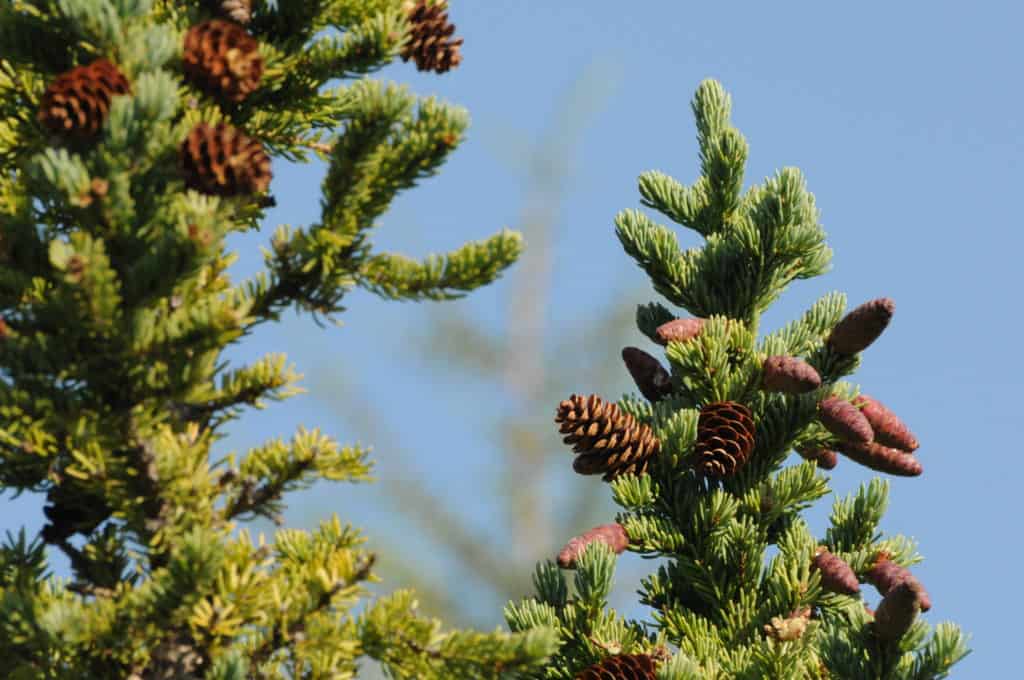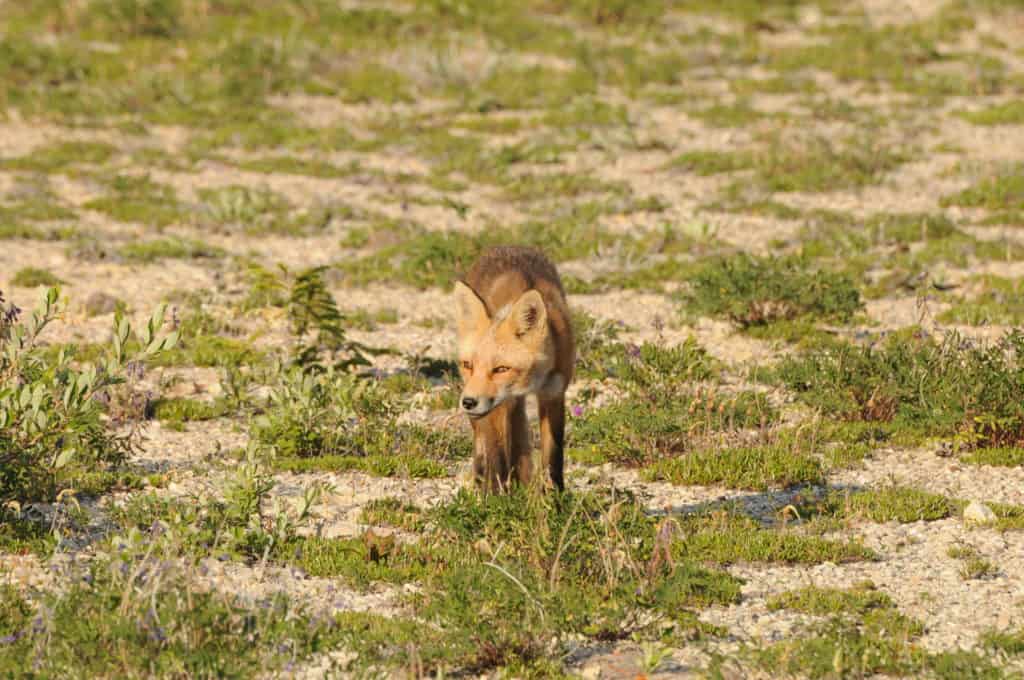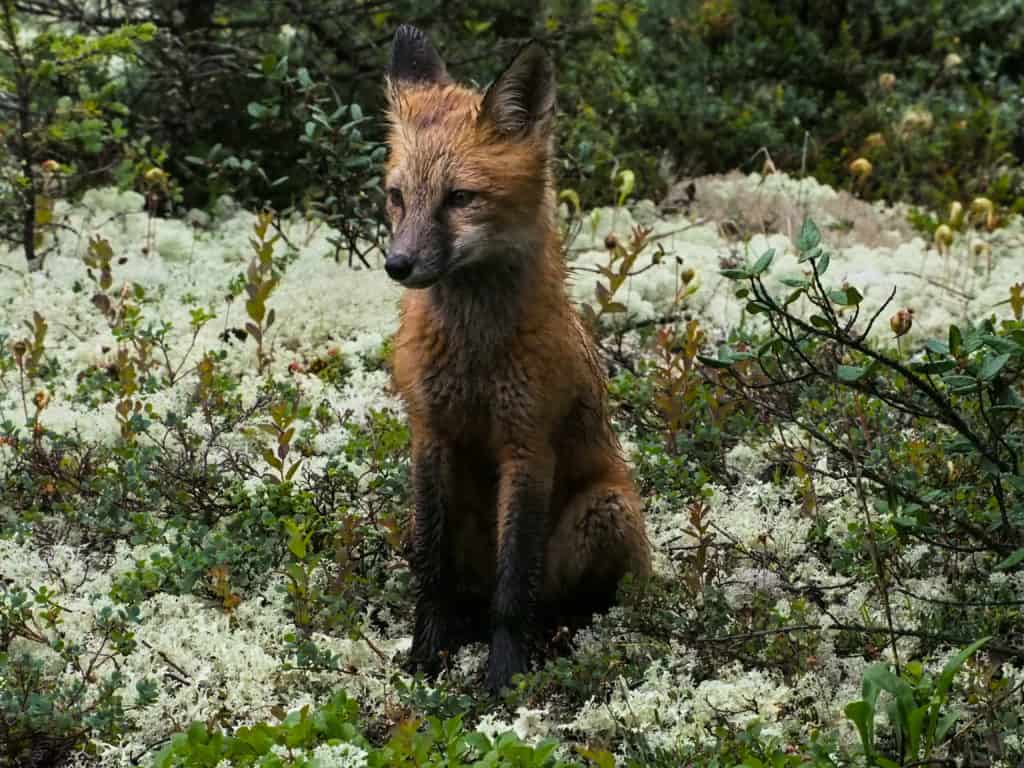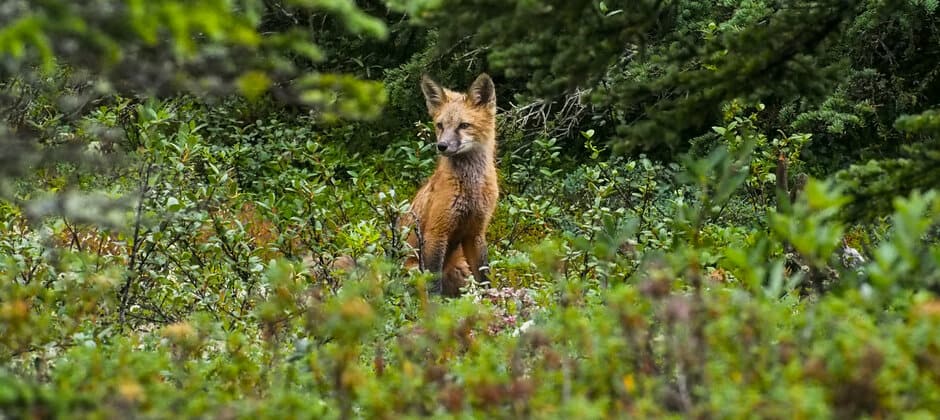Share this article
Foxes encourage boreal forest growth
During years that trees don’t grow so many cones, foxes may help increase spruce forest productivity.
White spruce, like many coniferous trees, often alternate between productive and non-productive years when it comes to cone production. The phenomenon isn’t well understood, but usually entire areas of forest are synchronized in these productive years, called mast years.
Meanwhile, researchers had long known that Arctic foxes (Vulpes lagopus) can boost the vegetation surrounding their dens in areas north of the tree line — the edge of forests where trees no longer grow — by depositing nitrogen and phosphorous back into the soil through their feces.
“You get this rich vegetation you can spot from a kilometer away,” said John Markham, a professor of plant ecology at the University of Manitoba.
Markham and his co-authors wanted to see whether a similar relationship occurred between red foxes (Vulpes vulpes) and spruce south of the tree line.

pruce produces more cones around fox dens in non-mast years. Credit: Caila Kucheravay
The researchers examined vegetation around dens near Churchill, Manitoba in July 2019 and compared them to areas without fox dens. They also bore into trees, using dendrochronology to assess the growth of yearly tree rings on fox dens and in control groups without fox dens.
In research published recently in Basic and Applied Ecology, they found that foxes do, in fact, have an impact on white spruce.
“The trees that are growing on the dens have at least twice the growth rate based on the tree rings,” Markham said. “These are consistent nutrient hot spots on the landscape.”
They then wanted to see whether this boost in growth was reflected in the trees producing more cones. They compared the cone production of different areas both in mast years and in non-mast years in areas with and without fox dens.

Red fox dens help some spruce extend past the tree line in the Arctic. Credit: Caila Kucheravay
They found that fox den presence had little impact on cone numbers during mast years. But in the non-mast years when trees weren’t as productive, the foxes did have a downstream effect on cone numbers. More cones were produced per tree in a given area when fox dens were present during that time, Markham said.
He added that these extra nutrients are particularly important to spruce near the tree line — an area typically short on resources. In these areas, cold temperatures usually limit tree growth, but foxes may help the trees overcome this problem.
“Having nutrients from the fox dens really helps the trees do a lot better,” he said.

In non-mast years, spruce around fox dens produce more cones. Credit: Chloé Warret-Rodrigues
This boost in cones might be beneficial to the foxes themselves.
For Arctic foxes, the rich vegetation around dens draws prey like lemmings that use the vegetation for cover in the summer and, in the winter, the thicker snow. Geese are also attracted to food resources around the dens.
“They become these hot spots for all kinds of animals coming to forage on these fox dens,” Markham said.
In white spruce forests, extra cones could draw more red squirrels (Sciurus vulgaris) — a prey item for red foxes.
This relationship hasn’t yet been proven, Markham said — not all cones produce the seeds that squirrels feed on. But some of his colleagues are currently opening up cones to count seeds in non-mast years around fox dens in follow-up research.
Header Image:
Red foxes increase the productivity of surrounding vegetation by introducing nutrients.
Credit: Chloé Warret-Rodrigues








